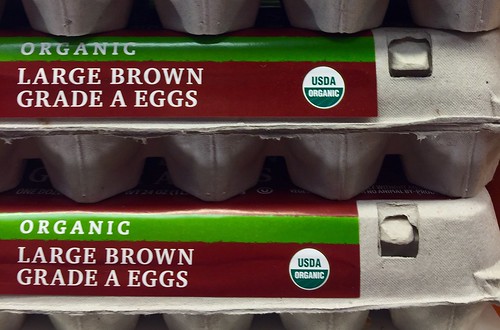
Understanding the USDA Organic Label
Amidst nutrition facts, ingredient lists, and dietary claims on food packages, “organic” might appear as one more piece of information to decipher when shopping for products. Understanding what the organic label means can help shoppers make informed purchasing choices.
Organic is a labeling term found on products that have been produced using cultural, biological, and mechanical practices that support the cycling of on-farm resources, promote ecological balance, and conserve biodiversity. The National Organic Program – part of USDA’s Agricultural Marketing Service– enforces the organic regulations, ensuring the integrity of the USDA Organic Seal.
In order to make an organic claim or use the USDA Organic Seal, the final product must follow strictproduction, handling and labeling standards and go through the organic certification process. The standards address a variety of factors such as soil quality, animal raising practices, and pest and weed control. Synthetic fertilizers, sewage sludge, irradiation, and genetic engineering may not be used.
Organic producers rely on natural substances and physical, mechanical, or biologically based farming methods to the fullest extent possible. Organic produce must be grown on soil that had no prohibited substances (most synthetic fertilizers and pesticides) applied for three years prior to harvest. As for organic meat, the standards require that animals are raised in living conditions accommodating their natural behaviors, fed organic feed, and not administered antibiotics or hormones.
There are four distinct labeling categories for organic products – 100 percent organic, organic, “made with” organic ingredients, and specific organic ingredients.
In the “100 Percent Organic” category, products must be made up of 100 percent certified organic ingredients. The label must include the name of the certifying agent and may include the USDA Organic Seal and/or the 100 percent organic claim.
In the “Organic” category, the product and ingredients must be certified organic, except where specified on National List of Allowed and Prohibited Substances. Non-organic ingredients allowed per the National List may be used, but no more than five percent of the combined total ingredients may contain non-organic content. Additionally, the label must include the name of the certifying agent, and may include the USDA Organic Seal and/or the organic claim.
For multi-ingredient products in the “made with” organic category, at least 70 percent of the product must be certified organic ingredients. The organic seal cannot be used on the product, and the final product cannot be represented as organic – only up to three ingredients or ingredient categories can be represented as organic. Any remaining ingredients are not required to be organically produced but must be produced without excluded methods (genetic engineering). All non-agricultural products must be allowed on the National List. For example, processed organic foods may contain some approved non-agricultural ingredients, like enzymes in yogurt, pectin in fruit jams, or baking soda in baked goods.
Multi-ingredient products with less than 70 percent certified organic content would fall under the “specific organic ingredients,” and don’t need to be certified. These products cannot display the USDA Organic Seal or use the word organic on the principal display panel. They can list certified organic ingredients in the ingredient list and the percentage of organic ingredients.
Becoming familiar with organic labeling allows consumers to make informed decisions about the products they purchase. Consumers can be assured that the integrity of USDA organic products are verified from farm to market. You can learn more about organic labeling by visiting: Labeling Organic Products.pdf.
No comments:
Post a Comment
Note: Only a member of this blog may post a comment.